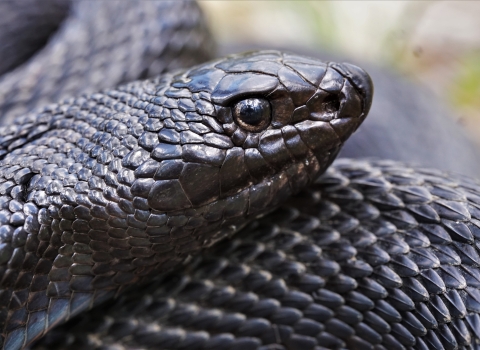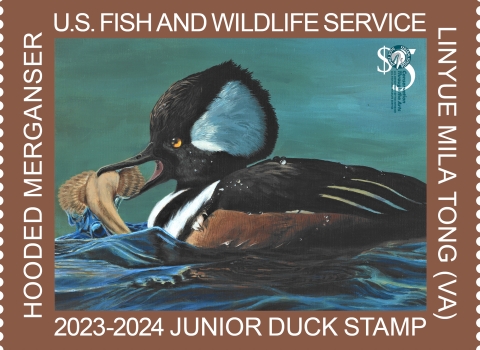Based on a review of the best available scientific information, the U.S. Fish and Wildlife Service is listing the peppered chub as endangered under the Endangered Species Act (ESA). The peppered chub is at risk of extinction due to significant declines of its freshwater stream habitat. The Service also is designating 872 river miles in New Mexico, Oklahoma and Texas as critical habitat that will be essential to the conservation of the species.
Threats to the peppered chub are also imperiling other wildlife species, which similarly rely on clean, reliable water resources. Across the U.S., hundreds of species of freshwater fish, mussels and aquatic species are at risk of extinction due to the loss, fragmentation and degradation of freshwater streams and rivers. ESA protections will benefit the peppered chub by raising awareness about threats to the species, inspiring diverse partnerships on its behalf and helping conserve habitat critical to its conservation and recovery.
“We are taking these actions to ensure the continued survival of the peppered chub in its native prairie streams in the Southwest,” said Amy Lueders, the Service’s Southwest Regional Director. “While the critical habitat designation will not impact private landowners, it will help identify areas where conservation actions are needed to protect and recover this imperiled fish. We stand ready to work collaboratively with federal, state and local partners to ensure a strong future for both the peppered chub and the communities who depend on the health of prairie rivers like the Canadian River.”
Stemming this extinction crisis is a central component of the Biden-Harris administration’s America the Beautiful initiative. This locally led and voluntary effort aims to conserve, connect and restore 30 percent of lands and waters in the U.S. by 2030, while enhancing wildlife habitat and improving biodiversity.
The peppered chub is a freshwater fish that grows up to three inches long and lives approximately two years. Today, the peppered chub is found in only about six percent of its historical range. Once found in the Arkansas River basin throughout Colorado, Kansas, New Mexico, Oklahoma and Texas, the peppered chub is now limited to the Canadian River that runs through northeastern New Mexico and the panhandle of Texas.
The chub requires unobstructed river, generally segments greater than 127 river miles and flowing water with adequate depths to support all its life stages. Primary threats to the species are river fragmentation and alterations, largely due to water diversions and impoundments, and degradation of water quality within its range.
Critical habitat for the peppered chub includes areas that are particularly important for the conservation of the species. The designation requires federal agencies to consult with the Service if they are conducting, funding or permitting activities that may adversely affect the chub’s recovery or its habitat. Designation of critical habitat does not affect land ownership, nor does it establish a refuge or preserve, and it has no impact on private landowners taking actions on their land that do not require federal funding or permits.
Though the Service initially proposed an additional 197 river miles of critical habitat in Kansas, during the public comment period we received a request to exclude this critical habitat because of an ongoing effort to include the species in a Candidate Conservation Agreement with Assurances (CCAA) and a Safe Harbor Agreement (SHA). The Programmatic Safe Harbor Agreement and Candidate Conservation Agreement with Assurances for Twelve Aquatic Species in Kansas) was completed on Dec. 15, 2021, and the critical habitat in Kansas has been excluded from the final rule.
The Service also is coordinating with the Canadian River Municipal Water Authority on continued efforts to control invasive, non-native vegetation and to maintain adequate flows within the chub’s range. Working with the state of Kansas, Service biologists are exploring the idea of captive propagation and fish passage fish passage
Fish passage is the ability of fish or other aquatic species to move freely throughout their life to find food, reproduce, and complete their natural migration cycles. Millions of barriers to fish passage across the country are fragmenting habitat and leading to species declines. The U.S. Fish and Wildlife Service's National Fish Passage Program is working to reconnect watersheds to benefit both wildlife and people.
Learn more about fish passage restoration for the chub that could contribute to the species’ recovery.
Plants, wildlife and fish such as the peppered chub are an essential part of healthy, functioning ecosystems. The growing extinction crisis highlights the importance of the ESA and efforts to conserve species before declines become irreversible. It also underscores how human activity can impact wildlife and ecosystems by contributing to habitat loss, collection/overutilization and the introduction of invasive species invasive species
An invasive species is any plant or animal that has spread or been introduced into a new area where they are, or could, cause harm to the environment, economy, or human, animal, or plant health. Their unwelcome presence can destroy ecosystems and cost millions of dollars.
Learn more about invasive species and disease. The growing impacts of climate change climate change
Climate change includes both global warming driven by human-induced emissions of greenhouse gases and the resulting large-scale shifts in weather patterns. Though there have been previous periods of climatic change, since the mid-20th century humans have had an unprecedented impact on Earth's climate system and caused change on a global scale.
Learn more about climate change are anticipated to further exacerbate these threats and their interactions for many species and ecosystems.
The final rule will publish in the Federal Register on February 28, 2022


